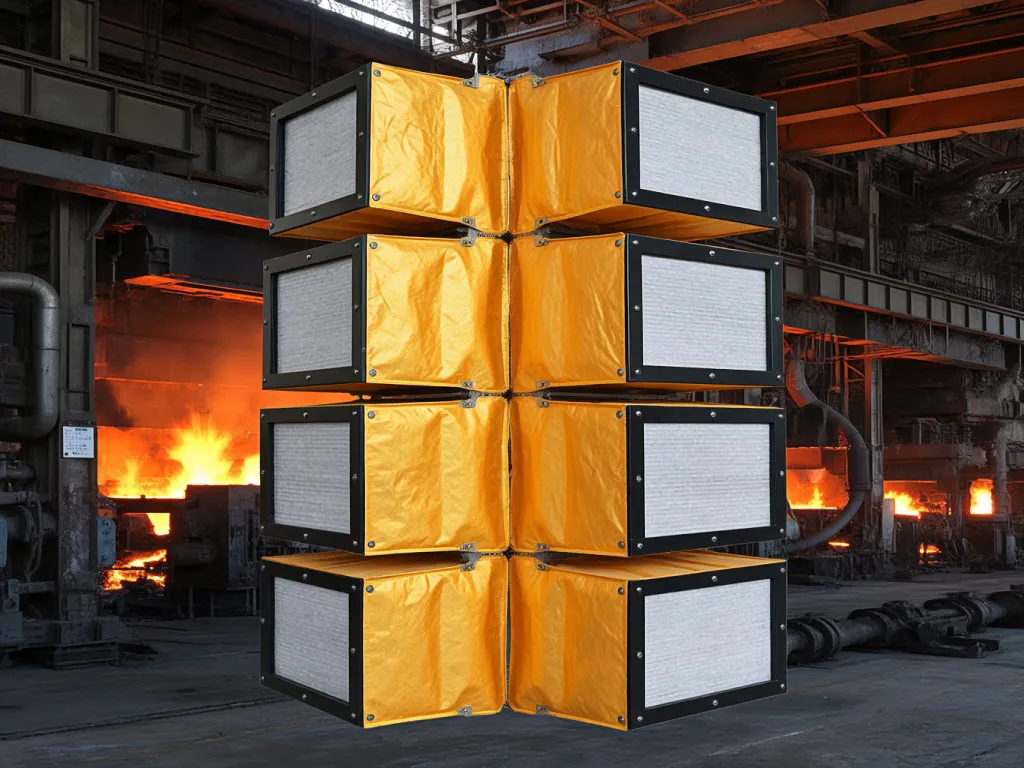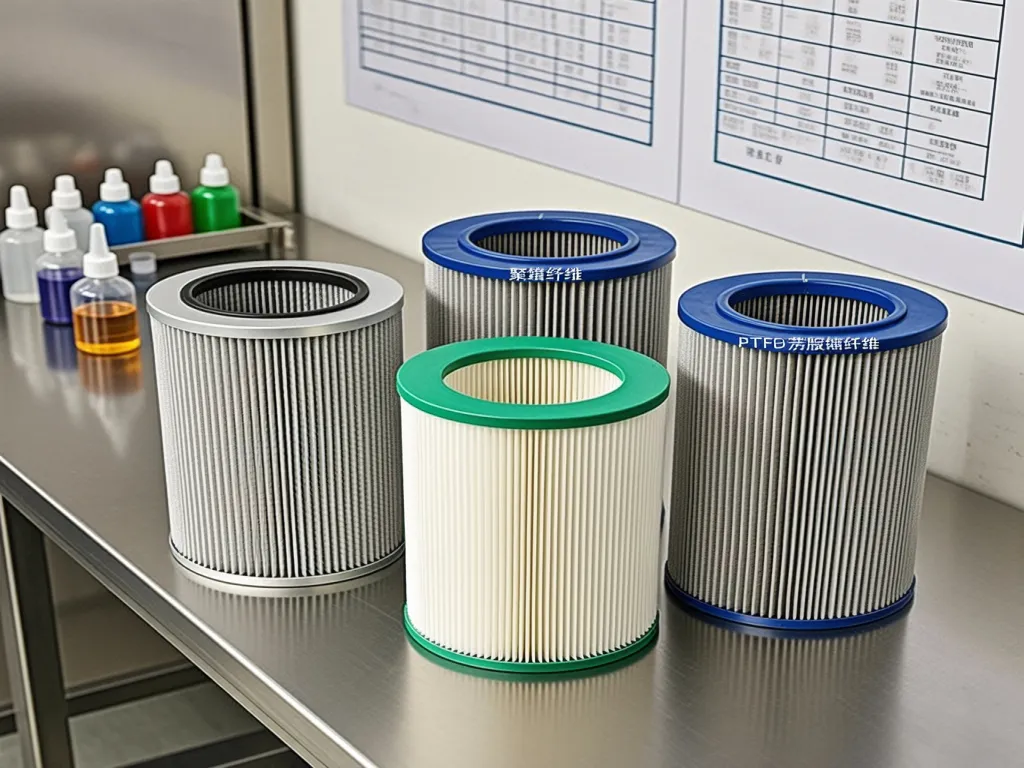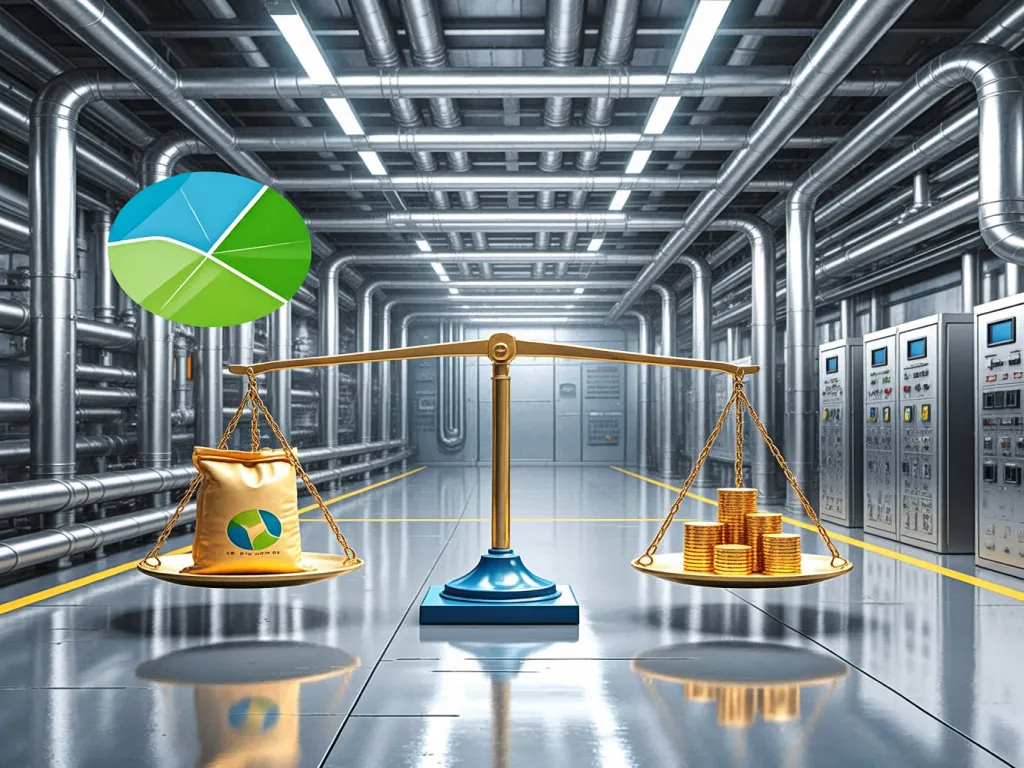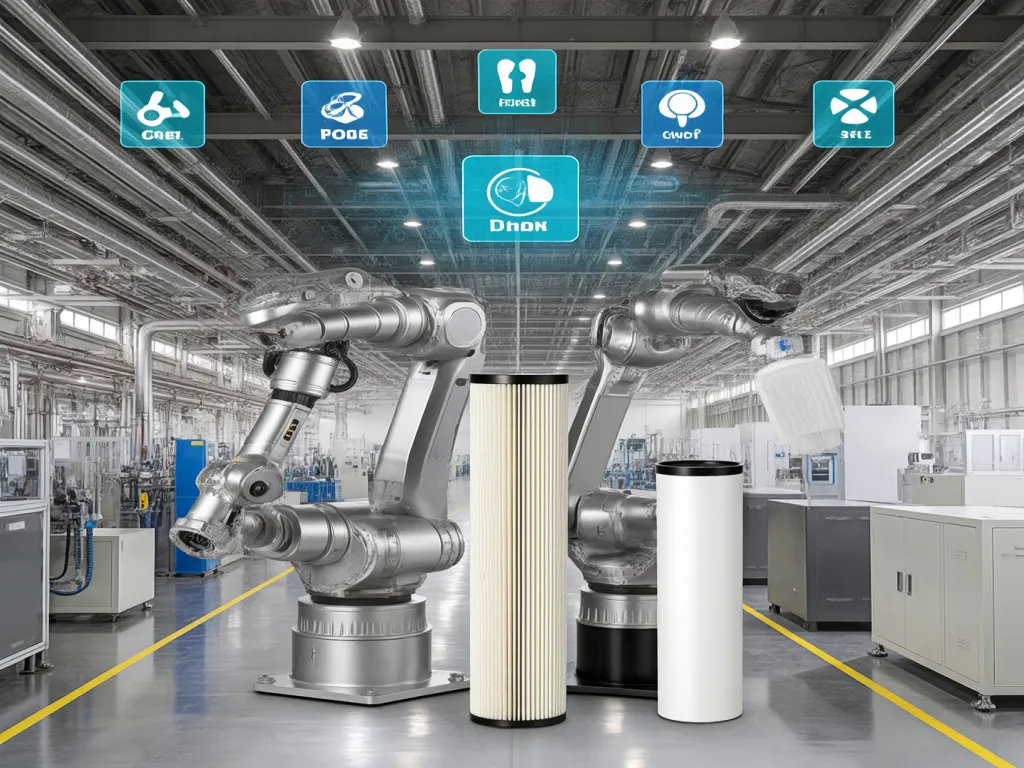Perfect Fit for Any Industry: Bag Filter Bags Guide
Navigating the world of industrial filtration can feel like solving a complex puzzle, especially when extreme conditions like high temperatures or corrosive substances come into play. For anyone managing industrial processes, the choice of bag filter bags isn’t just about finding a solution—it’s about finding the right solution. This guide dives deep into the nuances of selecting bag filter bags tailored for high-heat environments, corrosive settings, and cost-efficient strategies across industries. Ever wondered how a simple filter bag can transform your operational efficiency? Let’s find out.

Selection Tips for High – Temperature Environments: Exploring the Application Advantages of High – Temperature Resistant Materials (Such as Aramid) in High – Temperature Industrial Environments and How to Enhance Thermal Stability through Structural Design
When it comes to industrial filtration in high – temperature environments, selecting the right bag filter bags is like choosing the perfect armor for a battle. The high – temperature conditions in industries such as steel making, cement production, and incineration plants can be extremely harsh on filtration equipment. So, how do we ensure that our bag filter bags can withstand these extreme conditions? Let’s dive into the world of high – temperature resistant materials and structural design.
First, let’s talk about the star player in high – temperature resistant materials: aramid. Aramid fibers are known for their exceptional heat resistance. They can maintain their structural integrity at temperatures much higher than what conventional materials can handle. In a high – temperature industrial environment, aramid – based bag filter bags offer several significant advantages. For a more in – depth technical understanding of aramid’s properties in filtration, you can refer to this Aramid Bag Filter technical document.
One of the main benefits is their ability to resist thermal degradation. Unlike some materials that may break down or lose their strength when exposed to high temperatures, aramid fibers remain stable. This means that the bag filter bags made from aramid can continue to perform effectively over a long period, even in continuous high – temperature operations. For example, in a steel plant’s blast furnace gas filtration system, where temperatures can soar well above 200°C, aramid bag filter bags can withstand the heat without compromising their filtration efficiency.
Another advantage of aramid is its low thermal conductivity. This property helps in reducing the heat transfer from the hot gas stream to the outer parts of the bag filter bag. As a result, the surrounding equipment and the bag support structure are less likely to be affected by the high temperatures, enhancing the overall safety and longevity of the filtration system. It’s like having an insulating layer that protects the rest of the system from the scorching heat.
But materials alone are not enough. Structural design also plays a crucial role in enhancing the thermal stability of bag filter bags. One effective design approach is to use a multi – layer structure. By combining different materials with varying thermal properties in a multi – layer bag, we can create a more robust and heat – resistant filtration solution.
For instance, an outer layer made of a high – temperature resistant fabric like aramid can provide the initial protection against the hot gas. Inside, a layer of a material with good filtration properties, such as a fine – fiber glass or a special synthetic fiber, can ensure efficient particle capture. This multi – layer design not only improves the thermal stability but also optimizes the filtration performance.
The shape and size of the bag filter bag also matter. A well – designed bag with proper dimensions can ensure even airflow distribution. Uneven airflow can lead to localized overheating, which can damage the bag. By optimizing the bag’s shape, we can promote uniform heat dissipation and prevent hot spots. For example, a conical – shaped bag can help in better airflow management compared to a simple cylindrical bag in some high – temperature applications.
Moreover, the attachment and support mechanisms of the bag filter bag need to be carefully considered. High – temperature conditions can cause expansion and contraction of materials, which may lead to stress on the attachment points. Using high – temperature resistant fasteners and support structures can prevent the bags from coming loose or getting damaged due to thermal stress. If you’re interested in the thermal stability of materials used in high – temperature applications beyond just bag filters, you can explore thermal stability of high – temperature alloys. It’s like ensuring that all the parts of the bag filter bag work together harmoniously, even under the most challenging high – temperature conditions.
In conclusion, when selecting bag filter bags for high – temperature industrial environments, the choice of materials like aramid and the thoughtful structural design go hand in hand. By understanding the application advantages of high – temperature resistant materials and implementing effective structural enhancements, we can ensure that our bag filter bags perform reliably and efficiently, even in the most extreme high – temperature scenarios. So, are you ready to equip your industrial filtration system with the right bag filter bags for high – temperature challenges?

Material Selection in Highly Corrosive Environments: Analyzing the Tolerance of Polyester Fiber, Polypropylene, and Other Materials in Corrosive Media, with Suggestions for Material Upgrades and Protective Coatings
When it comes to industrial filtration in highly corrosive environments, the choice of material for your bag filter bags can make or break your system’s efficiency and longevity. You’re probably thinking, “Which materials can withstand acids, bases, and solvents without degrading?” Let’s dive into the most common options—polyester fiber and polypropylene—and explore when to consider upgrades or protective coatings.
Polyester fiber is a go-to for many filtration applications, thanks to its excellent strength-to-weight ratio and resistance to abrasion. But how does it hold up in corrosive environments? The truth is, polyester performs well against mild acids and alkalis, making it suitable for environments like food processing or water treatment where pH levels remain relatively neutral. However, when exposed to strong acids (e.g., sulfuric acid) or oxidizing agents, polyester can degrade over time, leading to reduced filtration efficiency and shorter bag life.
Now, let’s talk about polypropylene. This material shines in alkaline environments and is highly resistant to most organic solvents. It’s also less prone to hydrolysis compared to polyester, which means it won’t break down as easily when exposed to moisture and heat simultaneously. But here’s the catch: polypropylene struggles with strong oxidizing acids like nitric acid. If your process involves such chemicals, you might notice premature bag failure or a drop in performance.
So, what can you do if your application demands more than what polyester or polypropylene can offer? The answer lies in material upgrades and protective coatings. For instance, PTFE (polytetrafluoroethylene) membranes can be laminated onto polyester or polypropylene bags, providing an extra layer of chemical resistance. PTFE is virtually impervious to all known chemicals, making it ideal for extreme corrosive conditions. You can find PTFE-coated polyester dust filter bags for such applications. Another option is using aramid fibers, which are inherently resistant to both acids and bases, though they come at a higher cost.
But wait—there’s more to consider than just chemical resistance. Temperature stability, mechanical strength, and air permeability all play a role in selecting the right material. For example, if your process operates at elevated temperatures, you’ll need a material that maintains its structural integrity without melting or shrinking. In such cases, a hybrid material combining polyester with a heat-resistant additive might be the solution.
Protective coatings are another game-changer. Silicone coatings, for instance, can enhance a bag’s resistance to moisture and chemicals while improving its release properties. This means less clogging and easier cleaning, which translates to longer service life and lower maintenance costs. Fluoropolymer coatings are another excellent choice, offering superior non-stick properties and chemical inertness.
Let me ask you this: Have you ever experienced unexpected downtime due to bag filter failure in a corrosive environment? If so, you know how costly and frustrating it can be. By choosing the right material or upgrading with a protective coating, you can significantly reduce the risk of premature failure and keep your operations running smoothly.
In summary, selecting the right material for your bag filter bags in corrosive environments requires a careful balance of chemical resistance, temperature stability, and mechanical strength. Polyester and polypropylene are great starting points, but don’t hesitate to explore upgrades like PTFE membranes or aramid fibers when the stakes are high. And always consider protective coatings as a cost-effective way to extend bag life and improve performance. Ready to upgrade your filtration system? Let’s talk about how we can tailor a solution to your specific needs!
When to Opt for PTFE-Coated Bags
If your process involves highly corrosive chemicals or operates at extreme temperatures, PTFE-coated bag filter bags are worth considering. These bags combine the mechanical strength of a base material (like polyester) with the chemical inertness of PTFE, offering unmatched durability in harsh conditions. Plus, PTFE’s non-stick properties reduce clogging, making them ideal for sticky or viscous applications.
Aramid Fibers: The Premium Choice for Extreme Conditions
Aramid fibers, such as Nomex and Kevlar, are engineered to withstand both acids and bases while maintaining high tensile strength. They’re often used in industries like chemical processing, where exposure to aggressive chemicals is routine. While aramid bags are more expensive, their longevity and reliability can justify the investment, especially in critical applications where downtime is unacceptable. The global industrial filtration market, which includes these high-performance materials, is projected to grow significantly, as highlighted in the Industrial Filtration Market Report.
Silicone Coatings: Enhancing Durability and Performance
Silicone coatings are a versatile option for improving a bag’s resistance to moisture, chemicals, and abrasion. They create a smooth surface that reduces particle adhesion, making cleaning easier and extending bag life. Silicone-coated bags are particularly useful in applications involving wet or sticky particulates, such as pharmaceuticals or paint recovery. For more information on steel material corrosion in different environments, you can refer to this research study.

Comprehensive Scenario Balance Strategy: Integrating Filtration Efficiency, Lifespan, and Cost-Effectiveness for Optimal Bag Filter Bag Selection
When it comes to industrial filtration, finding the sweet spot between filtration efficiency, bag filter bag lifespan, and cost-effectiveness can feel like navigating a maze. Each industrial scenario throws its own set of challenges—be it extreme temperatures, corrosive substances, or high-volume filtration demands. So, how do you strike that perfect balance? Let’s dive into some real-world strategies tailored for different industrial environments.
First off, let’s talk about filtration efficiency. It’s the cornerstone of any filtration system. You want your bag filter bags to capture as many contaminants as possible, right? But here’s the catch: higher efficiency often comes at a higher cost. So, the trick is to assess your specific needs. Are you dealing with fine particulates that require high-efficiency filters, or can you get by with a slightly lower efficiency but longer-lasting bag?
Speaking of lifespan, it’s a game-changer. Imagine replacing your bag filter bags every few weeks versus every few months. The cost difference is staggering! Factors like material quality, construction, and operational conditions play a huge role here. For instance, in a high-temperature environment, opting for a bag made from heat-resistant materials like aramid can significantly extend its lifespan, reducing replacement frequency and costs.
Now, let’s bring cost-effectiveness into the mix. It’s not just about the initial purchase price; it’s about the total cost of ownership. That includes maintenance, downtime, and replacement costs. Sometimes, investing a bit more upfront in a higher-quality bag filter bag can save you a fortune in the long run. Think about it: a bag that lasts twice as long but costs only 20% more? That’s a no-brainer!
But how do you know which bag filter bag to choose for your specific scenario? Start by conducting a thorough analysis of your industrial environment. What are the contaminants you’re dealing with? What’s the temperature range? Are there any corrosive substances present? Once you have a clear picture, you can start narrowing down your options.
For instance, in a food processing plant where hygiene is paramount, you might prioritize bags with antimicrobial coatings to prevent bacterial growth. On the other hand, in a chemical manufacturing facility, you’d focus on bags that can withstand harsh chemicals without degrading. If you’re looking for a specific type of filter bag that balances cost and performance, consider exploring options like our polyester dust collector filter bags or high-efficiency industrial filtration bags, which are designed for durability and efficiency.
Don’t forget to consider the operational costs. A bag filter bag that requires frequent cleaning or replacement can quickly eat into your profits. Look for bags that offer easy maintenance and long service life. Some manufacturers even offer predictive maintenance services, using sensors to monitor bag performance and alert you when it’s time for a replacement.
In a nutshell, finding the balance between filtration efficiency, lifespan, and cost-effectiveness is all about understanding your specific needs and doing your homework. Don’t be afraid to ask for samples, read reviews, or even consult with experts. After all, choosing the right bag filter bag can make a world of difference in your industrial filtration process. So, are you ready to take your filtration game to the next level?
Balancing Filtration Efficiency and Cost
When you’re looking at filtration efficiency, it’s tempting to go for the highest rating possible. But remember, every percentage point increase in efficiency might come with a hefty price tag. Instead, assess your contamination levels. If your process generates mostly coarse particles, a mid-range efficiency bag might suffice, saving you money without compromising performance. It’s all about matching the bag’s capabilities to your actual needs.
Maximizing Lifespan Through Material Selection
The lifespan of your bag filter bags hinges largely on the materials used. For high-temperature applications, aramid fibers are your go-to, offering exceptional heat resistance. In corrosive environments, polyester or PTFE-coated bags can withstand chemical attacks, prolonging their life. And don’t overlook the construction—welded seams, for example, can prevent leaks and extend bag life compared to stitched seams.
Cost-Effectiveness: More Than Just Price
Cost-effectiveness isn’t just about the sticker price. It’s about evaluating the entire lifecycle cost. A cheaper bag that needs frequent replacement can end up costing you more in the long run. Factor in maintenance costs, downtime during replacements, and disposal fees. Sometimes, investing in a premium bag with a longer lifespan and lower maintenance requirements can yield significant savings over time. For a practical example, you can check a cost analysis of bag filters to better understand the financial implications.
Choosing the right bag filter bags is more than a purchasing decision—it’s a strategic move to enhance filtration efficiency and reduce long-term costs. From high-temperature resilience to corrosion-resistant materials, the key lies in aligning your filter bag selection with your unique industrial demands. Ready to revolutionize your filtration setup? Start by evaluating your specific needs and exploring customized solutions that deliver peak performance. The next step in optimizing your industrial processes begins with the right bag filter bags—what will yours be?


